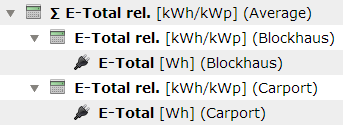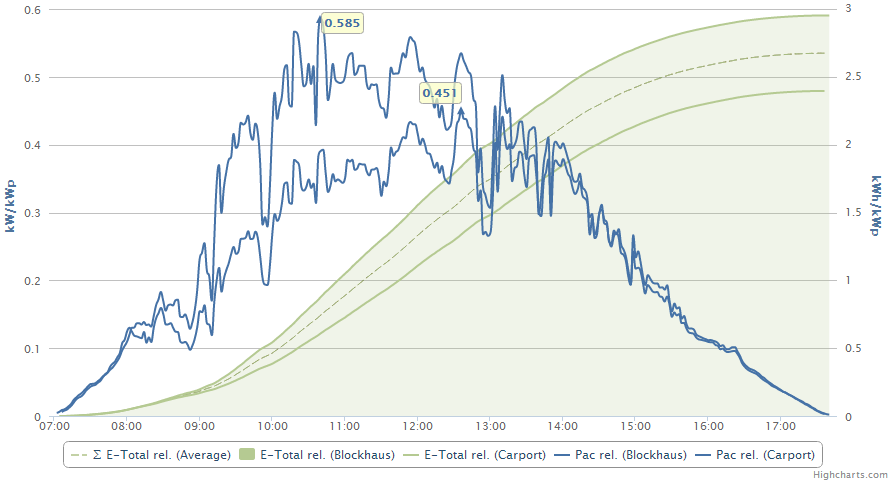Difference between revisions of "Relative powers"
From PhotoVoltaic Logger new generation
m (→Channel definitions) |
m |
||
| (One intermediate revision by the same user not shown) | |||
| Line 1: | Line 1: | ||
| − | + | {{TOCright}} | |
| − | |||
If you have for example more than one solar plant/inverter with different size/orientation, the absolute power values in watt are not so helpful for comparison. | If you have for example more than one solar plant/inverter with different size/orientation, the absolute power values in watt are not so helpful for comparison. | ||
| Line 36: | Line 35: | ||
Now the channels are better comparable: | Now the channels are better comparable: | ||
| + | [[File:RelativePowersChart.png]] | ||
[[Category:Example]] | [[Category:Example]] | ||
[[Category:Charts]] | [[Category:Charts]] | ||
Latest revision as of 17:24, 10 March 2014
Contents
If you have for example more than one solar plant/inverter with different size/orientation, the absolute power values in watt are not so helpful for comparison.
A common unit for comparison is kilo watt per kilo watt peak.
So therefor you have to transform the watt data from a power sensor into kilo watt per kilo watt peak.
Setup
- A power sensor (with unit watt in this example)
- A proxy channel for calculation
I use for this the calculator channel type, which is meant for such a use case.
To force the proxy to make the calculation, a proper resolution must be set.
- Inverter 1 installed power: 11.28 kilo watt peak
- Inverter 2 installed power: 9.18 kilo watt peak
Transform watt into kilo watt per kilo watt peak: 
Channel definitions
Values for the factor attributes:
- Inverter 1: 0.0000887
- Inverter 2: 0.000109
Build a proper channel hierarchy:
Chart
Now the channels are better comparable:


